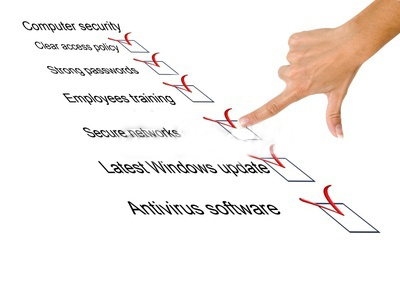
Physical Therapy Software: EMR Implementation Checklist
As you plan to change your manual system to an automated one, always keep in mind that you must communicate with your staff prior to the changes.
In order to have a smooth implementation of the EMR system, Nitin Chhoda shares a few important steps to take note of when including your staff in the process.
 Implementation of physical therapy software is a daunting task. Even before you have experience with the process, you’ll know that productivity will drop during the learning period.
Implementation of physical therapy software is a daunting task. Even before you have experience with the process, you’ll know that productivity will drop during the learning period.
You know that your staff will be frustrated at times and things won’t run more smoothly right off the bat. But you can take steps to make implementation easier and smoother.
- Plan Carefully
A critical step will be to make a physical therapy software plan. Include the staff in your planning process. Let them know what to expect, both from the training side and from the implementation side.
Set dates for certain milestones and make sure your staff members are aware of the changes. When everyone knows what to expect, they will be much less likely to be surprised and distracted by the changes that happen.
- Select an Implementation Manager
Someone will have to be in charge of the physical therapy software implementation process. They will be responsible for drafting the plan and getting buy-in from staff. They will schedule training sessions and be the point person when anyone has a question.
They will also be the person responsible for interfacing with the staff at the software company. In many cases, this is the person who vets and chooses the physical therapy software you will adopt.
- Training, Training, and Training
Do not even think about implementing physical therapy software without first training your staff sufficiently. Any software solution you consider should have an extensive training program that includes organized training sessions before implementation, and resources that staff can use on their own time, before, during, and after implementation.
Give your staff time to make the adjustments they will need to make.
Give them time to go over training materials. A little bit of time spent training now will make physical therapy software implementation go faster, saving you time in the long run.
- Inventory of Resources
 Another task of the implementation or office manager will be to inventory the current resources.
Another task of the implementation or office manager will be to inventory the current resources.
Will the physical therapy software solution you choose work on the existing computers?
Will you need a faster Internet connection? Are you going to use mobile devices like tablet computers? How many will you need to be optimally efficient and effective?
This is a frequently overlooked step that doesn’t get done until it is suddenly time to implement the physical therapy software. Hopefully you will be working with a company that recognizes how important this step is, but you may want to do this even before you select an EMR.
- Give Everyone Time and Space
The entire process will need to be heavily incentivized from the start. Your staff needs to know that the learning they are doing and the work they put in will ultimately benefit them and make them better at their jobs. Hopefully, that will be enough to inspire everyone to be enthusiastic.
But no matter how much you plan and train there will always be a few bumps and roadblocks. Schedule plenty of time in your physical therapy software implementation schedule so that you can adjust without causing disappointment, neither for you nor for your staff.



















